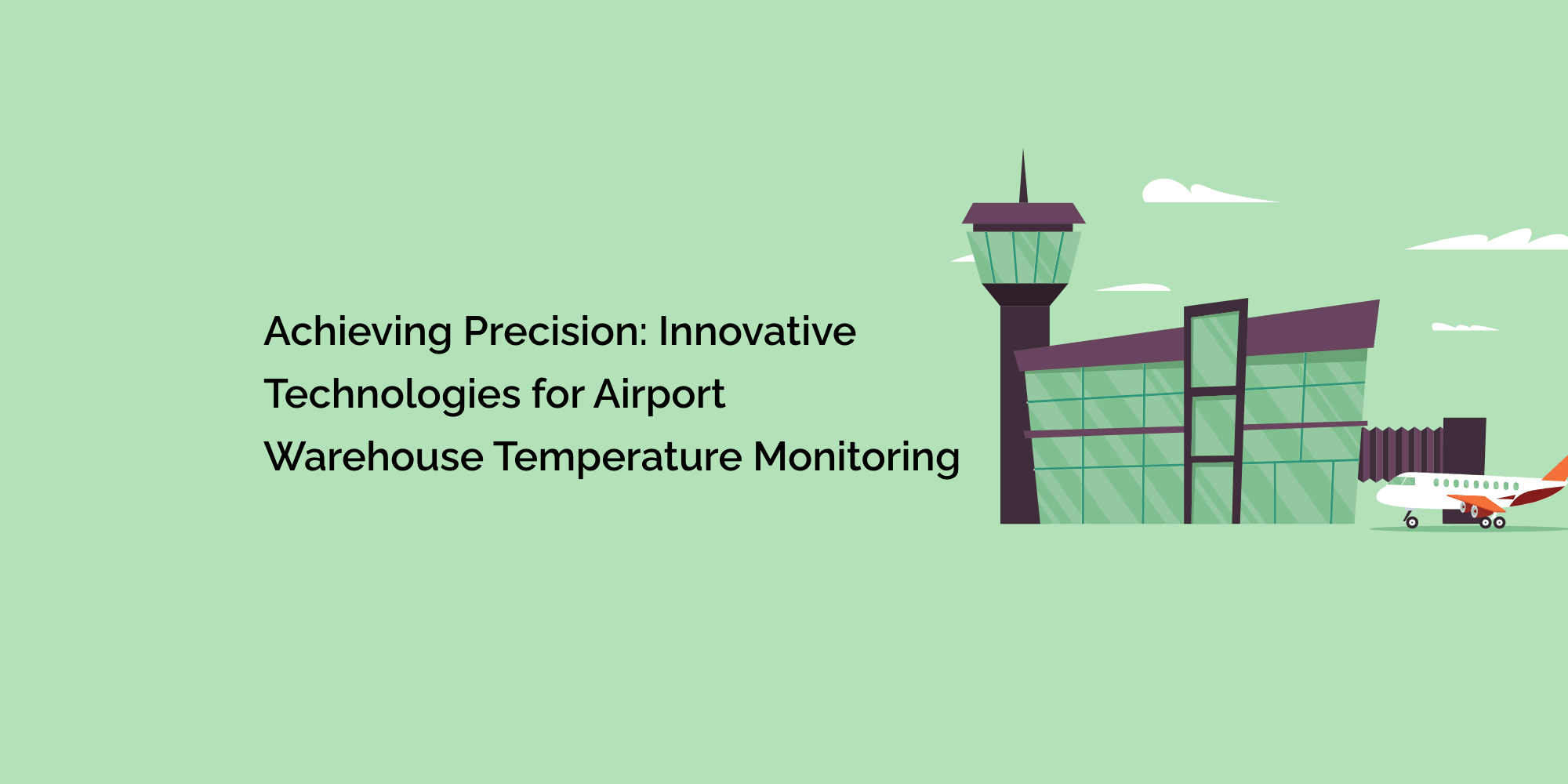In today's fast-paced world, airports play a vital role in facilitating the movement of people and goods across the globe. Behind the scenes, airport warehouses serve as critical hubs for storage and distribution of various goods, including perishable items. Maintaining precise temperature control in these warehouses is of utmost importance to ensure the quality and safety of stored goods.
In this blog, we will explore the significance of temperature monitoring in airport warehouses and delve into some innovative technologies that are revolutionizing the way temperature control is achieved with precision.
Importance of Temperature Monitoring in Airport Warehouses
Airport warehouses handle a wide range of goods, including pharmaceuticals, fresh produce, and other perishable items. These goods often require specific temperature conditions to preserve their quality and extend their shelf life. Failure to maintain the desired temperature range can result in spoilage, reduced product quality, and even potential health risks.
Temperature fluctuations can occur due to various factors, such as weather conditions, equipment malfunction, or human error. Therefore, continuous monitoring of temperature is essential to identify any deviations from the ideal range and take corrective actions promptly. Traditionally, temperature monitoring involved manual checks, which were time-consuming and prone to errors. However, advancements in technology have paved the way for more efficient and precise monitoring systems.
Innovative Technologies for Airport Warehouse Temperature Monitoring
-
Wireless Sensor Networks (WSNs)
Wireless Sensor Networks (WSNs) have emerged as a game-changer in temperature monitoring. These networks consist of small, battery-powered sensors that can be strategically placed throughout the warehouse to collect and transmit real-time temperature data. WSNs eliminate the need for manual checks and provide a continuous stream of information, allowing warehouse managers to monitor temperature variations instantly.
The sensors in WSNs can be configured to send alerts when the temperature exceeds predefined thresholds. This proactive approach enables swift intervention to rectify any issues before they escalate. Additionally, WSNs can be integrated with data analytics platforms, allowing for in-depth analysis and predictive modeling to optimize warehouse operations and energy efficiency.
-
Internet of Things (IoT) and Cloud Computing
The Internet of Things (IoT) has revolutionized various industries, and airport warehouses are no exception. By connecting temperature sensors, data loggers, and monitoring devices, IoT enables real-time data collection and analysis. These interconnected devices communicate with each other and can be remotely accessed through cloud-based platforms.
IoT-based temperature monitoring systems provide airport warehouse managers with enhanced visibility and control. The data collected from sensors can be analyzed to identify patterns, detect anomalies, and optimize temperature control strategies. Furthermore, cloud-based storage facilitates easy access to historical data and enables collaborative decision-making among stakeholders.
-
Artificial Intelligence (AI) and Machine Learning (ML)
Artificial Intelligence (AI) and Machine Learning (ML) algorithms have the power to transform temperature monitoring by enabling predictive analytics and intelligent decision-making. By analyzing vast amounts of historical temperature data, AI algorithms can learn patterns and predict future temperature trends with remarkable accuracy.
AI-based temperature monitoring systems can automatically detect anomalies and deviations from expected temperature ranges. This proactive approach enables early intervention and helps prevent potential issues. Furthermore, AI algorithms can optimize temperature control strategies based on real-time data, ensuring efficient energy usage and minimizing waste.
-
Blockchain Technology
Blockchain technology, known for its transparency and immutability, is also finding applications in temperature monitoring. In the context of airport warehouses, blockchain can help establish a tamper-proof record of temperature data throughout the supply chain. Each temperature reading can be timestamped, encrypted, and added to a distributed ledger, ensuring the integrity and traceability of temperature information.
The decentralized nature of blockchain technology eliminates the reliance on a central authority, making it more resistant to fraud and manipulation. This enhanced data security and trust can be particularly valuable when dealing with sensitive goods such as pharmaceuticals or vaccines, where maintaining the integrity of temperature records is crucial for compliance and quality assurance.
Conclusion
Achieving precision in temperature monitoring is essential for ensuring the quality, safety, and longevity of goods stored in airport warehouses. With the advent of innovative technologies such as Wireless Sensor Networks (WSNs), Internet of Things (IoT), Artificial Intelligence (AI), Machine Learning (ML), and blockchain, temperature monitoring has become more efficient, accurate, and proactive. These technologies enable real-time data collection, predictive analytics, intelligent decision-making, and enhanced data security, revolutionizing the way airport warehouses maintain precise temperature control.
As airports continue to evolve and handle larger volumes of goods, the adoption of these innovative temperature monitoring technologies will become increasingly vital. By embracing these advancements, airport warehouses can enhance their operational efficiency, reduce waste, improve product quality, and ensure compliance with stringent temperature regulations. Ultimately, the integration of these technologies will pave the way for a more reliable and sustainable aviation industry, benefitting passengers, businesses, and the global supply chain as a whole.








